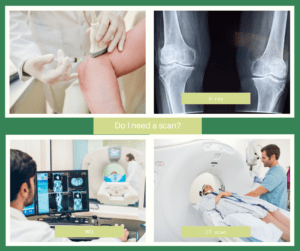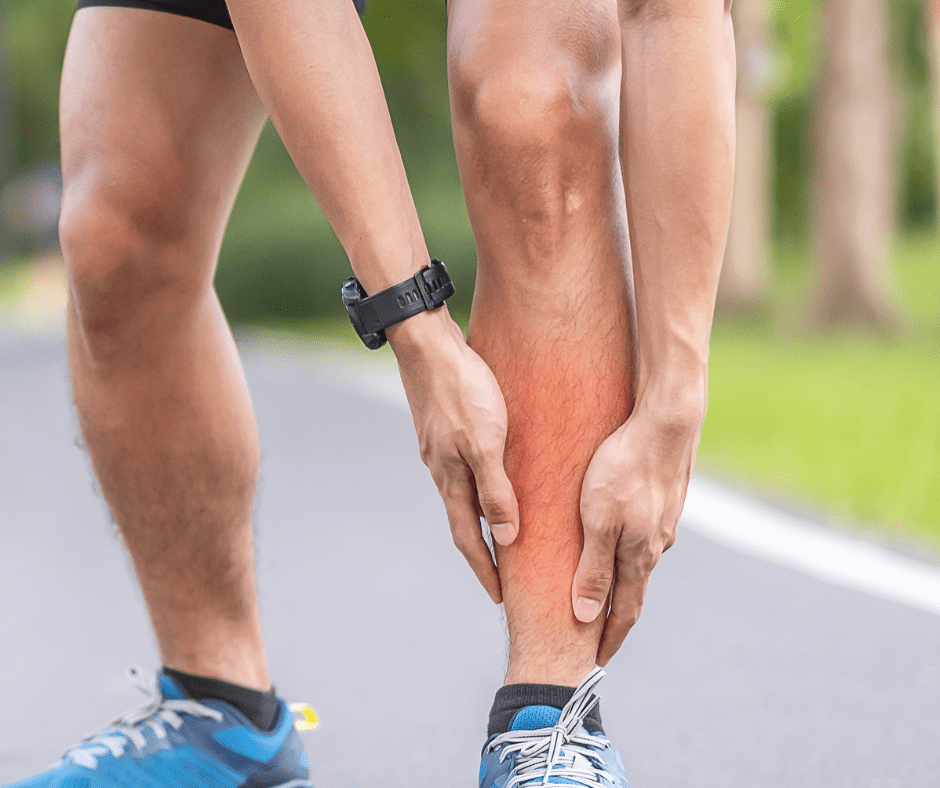What type of scan do I need?

You’ve sustained an injury and what type of scan should you have? It’s important to firstly point out that any imaging modality must be compared with a thorough clinical history and clinical assessment. Imaging helps to support and confirm a diagnosis and direct treatment options.
X-ray
Perhaps the most common type of imaging that most people are aware of is x-rays. These are usually performed at the dentist, in A&E and sometimes in chiropractic clinics. X-rays by their nature emit radiation, but this is usually quite a low dose and it’s reasonably safe to have multiple x-rays through your lifetime. You may have an x-ray if you have badly twisted your ankle and there is a suspected fracture, or you’ve been in a more serious accident and there is an obvious fracture that needs to be assessed. Chest x-rays can also be performed to look at the lungs and heart. Beyond this, x-rays are not useful for other types of injury such as soft tissue injuries.
Ultrasound scan
Ultrasound scans of becoming more common both within the NHS and in private practice. Ultrasound uses sound waves (not radiation) to generate a picture from structures inside your body. Ultrasound is very useful for a variety of things such as assessing a developing foetus, looking at vascular structures such as veins and arteries (for DVT) looking at the lungs or the heart (echocardiogram) and more commonly now in musculoskeletal medicine for looking at tendons, ligaments and muscles. Ultrasound is extremely useful for assessing the shoulder for example and has been shown to be as accurate as MRI. Ultrasound is generally cheap, safe and readily available in outpatient clinics, it’s fairly easy to repeat scan from visit to visit (although you might not see much changing pathology) and it’s also a great tool to compare injured to non-injured side which typically doesn’t happen with other imaging modalities.
MRI scan
MRI is perhaps the next most common imaging modality. MRIs are fantastic scans for looking at various body tissues such as the brain and nervous system, bone, ligament, muscle, and joint injuries. However, MRI is not quite as good at looking at tendon injuries as ultrasound. MRIs are generally quite expensive ranging from £300-£700 and require you to go to an imaging centre or hospital and lie in the MRI machine, which many people find claustrophobic. They are generally quite loud taking 15 to 20 minutes to complete and you will unlikely get repeat scans or left / right body part comparison scans.
CT scans
Lastly CT scans are often used for diagnosing certain injuries and illnesses. CT scans provide great images of bodily organs such as the liver, heart or kidneys; they can show bone injuries and tumours and also nicely show joints. However as with x-ray CT scanners emit radiation, often significantly more radiation and it is not advisable to have repeated CT scans.
So, as you can see different scanning modalities have their pros and cons and will be offered to different people in different settings. At Wandsworth Physiotherapy and Osteopathy we use ultrasound scans as our modality of choice, however there are occasions where we may require an MRI scan.
If you’re suffering and need an ultrasound scan or an ultrasound guided steroid, PRP or hyaluronic acid injection contact us today.




